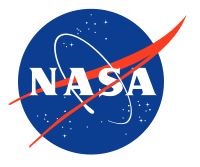CURRENT AFFAIRS
Get the most updated and recent current affair content on Padhaikaro.com
NASA’s DART Mission
- Vaid's ICS, Lucknow
- 25, Nov 2021

GS Paper III
Why in News?
On November 24, at around 11.50 am (IST), NASA will launch the agency’s first planetary defense test mission named the Double Asteroid Redirection Test (DART).
- The spacecraft will be launched on a SpaceX Falcon 9 rocket from Vandenberg Space Force Base in California.
About DART Mission:
- The main aim of the mission is to test the newly developed technology that would allow a spacecraft to crash into an asteroid and change its course.
- DART is a low-cost spacecraft, weighing around 610 kg at launch and 550 kg during impact.
- It also carries about 10 kg of xenon which will be used to demonstrate the agency’s new thrusters called NASA Evolutionary Xenon Thruster–Commercial (NEXT-C) in space.
- The spacecraft carries a high-resolution imager called Didymos Reconnaissance and Asteroid Camera for Optical Navigation (DRACO). Images from DRACO will be sent to Earth in real-time and will help study the impact site and surface of Dimorphos.
- DART will also carry a small satellite or CubeSat named LICIACube (Light Italian CubeSat for Imaging of Asteroids). LICIACube is expected to capture images of the impact and the impact crater formed as a result of the collision. It can also capture images of any dust cloud formed during the impact.
Which asteroid will be deflected?
The target of the spacecraft is a small moonlet called Dimorphos (Greek for “two forms”). It is about 160-metre in diameter and the spacecraft is expected to collide when it is 11 million kilometres away from Earth.
Dimorphos orbits a larger asteroid named Didymos (Greek for “twin”) which has a diameter of 780 metres.
The plan:
The spacecraft will navigate to the moonlet and intentionally collide with it at a speed of about 6.6 kilometres per second or 24,000 kilometres per hour. The collision is expected to take place between September 26 and October 1, 2022.
Facts for Prelims
Kamo’oalewa:
In 2006, the PanSTARRS telescope in Hawaii spotted a quasi-satellite — a near-Earth object that orbits the Sun and yet remains close to the Earth. Scientists named it Kamo’oalewa, a word that is part of a Hawaiian chant, and alludes to an offspring that travels on its own.